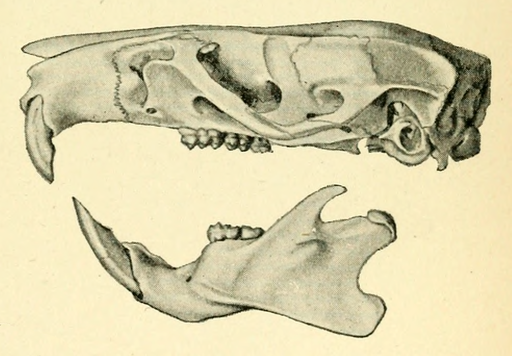Though Christmas Island rats went extinct over one hundred years ago, Anna Gibbs in sciencenews describes how genetically modifying the Norway brown rat would essentially reincarnate the Christmas Island rat. CRISPR is a relatively new technology that can be used to edit the genes of animals and has changed the science world of extinction. It works by editing “an existing animal’s genome so that it resembles that of the desired extinct animal… making that proxy as similar to the extinct species”.
Gibbs explains how using this technology, scientists compared fragments of the extinct rat’s genetic makeup, the Christmas Island rat, to that of their living relative, the Norway brown rat. By taking DNA from two preserved skin samples of the Christmas Islan d rat, the scientists were able to recover 95% of their genome. They compared the samples of the extinct species with the Norway brown rat and found that their genomes were very similar, 95% to be exact. Because of evolutionary divergence between the two species, the last 5% of the genetic information was lost forever. The missing genes were mostly located in the regions that controlled the rat’s immune responses and sense of smell. If they were to edit the Norway brown rat’s genome to resemble that of the Christmas Island rat, the differences in smell would be detrimental to their survival. This tiny difference in their genomes would prevent scientists from being able to recover the extinction of the Christmas Island rat.
d rat, the scientists were able to recover 95% of their genome. They compared the samples of the extinct species with the Norway brown rat and found that their genomes were very similar, 95% to be exact. Because of evolutionary divergence between the two species, the last 5% of the genetic information was lost forever. The missing genes were mostly located in the regions that controlled the rat’s immune responses and sense of smell. If they were to edit the Norway brown rat’s genome to resemble that of the Christmas Island rat, the differences in smell would be detrimental to their survival. This tiny difference in their genomes would prevent scientists from being able to recover the extinction of the Christmas Island rat.
Though the scientists didn’t intend on actually reincarnating the rats, Gilbert says that what they discovered “could prove useful for people working on even more ambitious projects, like bringing back the wooly mammoth”. The hurdles of CRISPR technology lie in the tiny details of genetic engineering, even the smallest difference can prevent de-extinction. Ben Novak, a leading scientist at a nonprofit that uses genetic engineering for conservation projects, says that though there are  ways to capture some of the missing data, “the fact that some data will always be missing is a limitation that de-extinction scientists have already come to terms with”. The goal of de-extinction isn’t to completely recreate the extinct species but rather to formulate a new species out of the old that will fool its environment and live on. As we learned in AP biology this year, our bodies contain DNA polymerases that are constantly proofreading our DNA strands to make sure all of our nucleotides are correctly paired. If they are not, they are programmed to cut out the incorrect segment and replace it with the correct nucleotides. We even have a DNA ligase that acts as the glue in our DNA and keeps everything together. If the DNA polymerase were unable to detect the incorrect nucleotide matchup then it would stay and end up as a permanent mutation in the next cell division. Errors with the DNA polymerase, such a tiny part of our whole working body, are alike to the small error in CRISPR technology. The inability to recover all of the genomes due to the tiniest difference will cause scientists to miss out on the reincarnation of animals lost forever.
ways to capture some of the missing data, “the fact that some data will always be missing is a limitation that de-extinction scientists have already come to terms with”. The goal of de-extinction isn’t to completely recreate the extinct species but rather to formulate a new species out of the old that will fool its environment and live on. As we learned in AP biology this year, our bodies contain DNA polymerases that are constantly proofreading our DNA strands to make sure all of our nucleotides are correctly paired. If they are not, they are programmed to cut out the incorrect segment and replace it with the correct nucleotides. We even have a DNA ligase that acts as the glue in our DNA and keeps everything together. If the DNA polymerase were unable to detect the incorrect nucleotide matchup then it would stay and end up as a permanent mutation in the next cell division. Errors with the DNA polymerase, such a tiny part of our whole working body, are alike to the small error in CRISPR technology. The inability to recover all of the genomes due to the tiniest difference will cause scientists to miss out on the reincarnation of animals lost forever.
Overall, though CRISPR findings are really “awesome”, it may not be the best use of money when we are struggling to keep our rhinos alive. In my opinion, CRISPR is not worth the funding until we are able to figure out how to recover 100% of the extinct genome. Comment your opinion on whether CRISPR should continue to receive additional funding, essentially is it worth it knowing we will never recover 100% of the extinct genome?


Leave a Reply